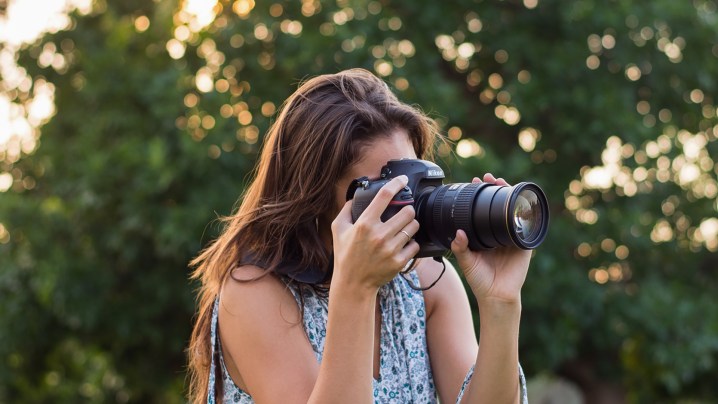
Cameras nowadays seem to have every feature baked into them, but sometimes it can help to have a few extra tools on hand to both protect your gear and push to its fullest potential. To help get you started on your photographic endeavors, we’ve rounded up some of the must-have accessories for your kit, whether you’re shooting with a DSLR or mirrorless camera.
Screen Protector

Camera Strap

Unless you purchased your camera used, there’s a good chance it came with a strap in the box. While the included straps aren’t inherently bad, they’re not always the most comfortable and certainly not the most stylish. Thankfully, there’s no shortage of options out there to get the perfect camera strap for your needs. Whether it’s a dual-camera rig for when you’re carrying multiple cameras or a stylish leather strap to match your Redwing Iron Ranger boots, there’s a strap out there just waiting to keep your camera securely attached to your side. Here are some of the best camera straps on the market.
Tripods
A tripod is an essential tool in any photographers kit. Most photo blur is caused by human error — shaky hands make a shaky camera. Tripods come in a variety of shapes and sizes, from heavy, stable models for studio work to lightweight and compact travel models. There are also two types of tripod heads, the part to which the camera connects: the ball head and the pan/tilt head. The ball head is usually more expensive but the “ball” aspect gives the more flexibility, with the ability to quickly orient the camera in any direction.
To help make your search easier, we’ve rounded up a collection of our favorite tripods on the market.
Replacement Batteries

This is probably a no-brainer, but it’s worth mentioning. An extra battery (or five) can be a lifesaver if your camera loses power on a shoot.
All camera manufacturers suggest using first-party batteries (and we generally agree), but there are plenty of third-party options available if you want to save a few bucks. Third-party batteries may not match the exact specifications of first-party versions, and in some cases may not work properly on future camera models. However, the money you save may make the risk well worth it. Whereas a single Canon-branded LP-E6N battery retails for $63, two third-party LP-E6N batteries from Wasabi Power will only set you back $20.
Camera Bag
Considering how much your camera and lenses cost, it’s wise to spend a little bit more and get a bag to protect it all. After all, you’ll probably be traveling around a good bit to get the shots you want. The type of camera bag you get depends on your gear, needs, and style. There are endless options to choose from when it comes to camera camera bags: slingpacks, backpacks, messenger bags, beltpacks, form-fitting cases, and more. To help make the decision process easier, we’ve gathered our favorite camera backpacks for every type of photographer, from newbies to seasoned veterans.
Filters
Using different lens filters may be one of the best things you can do for your camera and your photography career/hobby. Although there are hundreds of different filters, the most commonly used filters for digital photography includes polarizing (linear/circular), UV/haze, neutral density, graduated neutral density and warming/cooling or color filters. These filters alter and enhance images by altering the light going into the camera and each of them serves their own purpose. We’ve broken down how each filter works and what effect they give your images in our photo filter guide. In addition to adding unique effects to your images, a filter can also serve as protection to ensure the exposed front element of your lens is a little better protected from fingerprints, bumps, and scratches.
Memory Cards
Memory cards are more of a necessity than an accessory, but we’ve added them to the list just in case. Before you start snapping photos you have to consider how much memory you need.
The amount of storage you need will vary depending on the type of photography you’re planning on shooting and the size of the image files your camera puts out. The camera you buy will also determine the type of memory card you get as well. In general, the two most compatible types of memory cards for cameras are Compact Flash cards and SD Memory cards, although other options are popping up as speed and capacity become a priority. It’s probably best to have more than one memory card on hand, especially if you are travelling or at a celebratory event—you never know when you may need more room.
Also consider the speed of the memory card—faster speed ratings are especially important for digital photography because it means you’re able to take another shot quicker, particularly for higher megapixel cameras.







